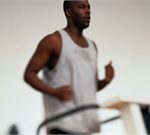
A drug long used to treat Parkinson’s disease may benefit patients with a severe form of age-related macular degeneration (AMD), a small clinical trial suggests. One of the leading causes of vision loss in older people is a condition called dry macular degeneration. More than 15% of Americans over age 70 have AMD, and 10% to 15% of those cases go on to develop the more severe wet macular degeneration, which can cause swift and complete vision loss. Typically, wet AMD is treated with injections of medication into the eye. Most people need several per year to keep the disease from progressing. But this small, early-stage clinical trial suggests an alternative may be on the horizon: the leading drug used to treat Parkinson’s disease, called levodopa. The trial was an outgrowth of a 2016 study that found Parkinson’s patients who took levodopa were less likely to develop macular degeneration. “The study found a relationship between taking levodopa and macular regeneration,” said Dr. Robert Snyder, a professor of ophthalmology at the University of Arizona, in Tucson. “It delayed the onset of both dry and wet macular degeneration, and reduced the odds of getting wet macular degeneration.” Macular degeneration affects the macula, part of the eye that allows you to see fine detail. Wet AMD happens when abnormal blood vessels grow under the macula; often, these blood… read on >
























-300x200.jpg)













